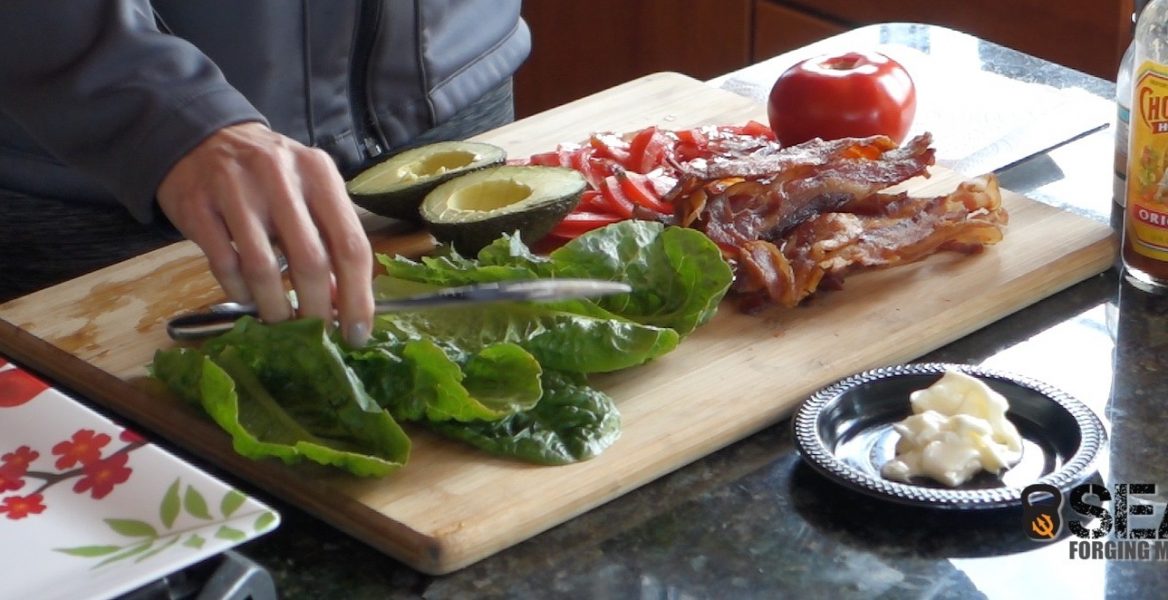Last week we discussed how ridding your diet of simple sugars will allow you to capitalize on your body’s ability to generate optimal, sustained levels of energy and power output. Some may feel that the quality of fuel is not so much of an issue as long as you’re out there burning it off. You hear this on occasion from high-mileage runners and triathletes, voicing a nutritional philosophy along the lines of, “I run high-mileage so that I can eat whatever I want and as much as I want.”
Dr. John Ivy, a kinesiology professor at the University of Texas, in an interview on the subject of sports nutrition, pointed out that reducing a diet to pure calorie consumption and a free-for-all with junk food can have deleterious effects that may not be immediately apparent: Runners in a test group eating a crappy diet were given blood tests after they had stopped training for just a few days, and the blood profiles read like they would for someone who has type-2 diabetes. In other words, like we discussed last week, a diet that produces chronic, cellular inflammation is—whether you notice it or not—making it more likely you’ll get sick, sustain an injury or breakdown into an state of overtraining.
A race car analogy is fitting: If you invested millions of dollars into a Formula One race car and were trying to compete in the Grand Prix, what would you do if you saw a mechanic about to pump bleach into the gas tank? You’d want to kill the guy, right? Keep this scenario in mind the next time you reach for a bottle of Coke.
High-performance fuel is a necessity if you want a full return on your physical and mental training program.
Sugar-laden junk food may seem like an obvious thing to cut. But why is it that the Paleo diet also recommends cutting out grains, cereals and wheat? Even brown rice and legumes?
The short-answer is this: Human evolution has not caught up with either the agricultural era or, more recently, the era of industrialized food (aka processed food) and genetically-engineered food. Our gut is still best-suited to the foods cavemen hunted and foraged for. And it’s a tall order for our guy to catch up with: Consider wheat, which is the third largest crop in the world. Modern technology, genetic engineering and chemical pesticides has enabled the production and milling of wheat that bares little resemblance to the wheat that was grown half a century ago. And modern, synthesized wheat is everywhere: Waffles, pizza, muffins, bread (obviously), pasta and cereal, just to name a few.
The key problems with modern wheat is that the nutrients have been stripped out of it and it can wreak havoc on the digestive system, acute problems like GI distress and a leaky gut—signs that you’re doing something wrong. Not to mention that if your diet is heavy in the foods mentioned above, it’s possible you’re consuming hundreds of grams of carbohydrate per day and paying the price in terms of inflammation.
But as I wrote in my book, 8 Weeks to SEALFIT, while I encourage you to let go of the non-Paleo foods that evolution hasn’t caught up with and stick to meat, fish, fowl, vegetables, nuts, seeds and some fruit, I also encourage you to do some quality self-testing to see whether or not drinking milk or eating legumes is giving you any digestive problems or effecting your health and performance in any way. If it turns out that dairy isn’t causing you any trouble, than having a moderate amount of dairy in your diet is probably fine. Legumes can be a great source of energy for those who it causes no problems for. Still, I would just encourage you to stick with the highest quality dairy and food products you can get your hands on. Dairy, for example, should be grass-fed, organic, locally-produced dairy that hasn’t been poisoned by chemical fertilizers and pesticides.
HIT THE RESET BUTTON WITH A 30-DAY CHALLENGE
So how do you go about dialing in what foods are screwing you up and what foods are not? Simple: Commit to eating a super clean Paleo diet for 30 days, carefully monitoring in a food journal how your feel and how you perform during that time period. This means cut out the dairy, the grains, the rice and legumes and eating only fresh, high-quality meats, fish, chicken, vegetables, nuts, seeds and in-season fruits. Water and more water. Perform your 30-day fueling challenge while concurrently taking on a SEALFIT monthly challenge.
Performing this 30-day test will be like hitting the reset button. Then, you can test out cow’s milk or legumes or what have you on a case by case basis, re-introducing them into your diet and observing what happens. You’re now doing your own science. Watch and carefully feel out what happens. Do you feel any intestinal distress? Does the food cause any energy drop? Does it make you feel good or feel like shit? Your body will tell you how well you are adapted to the food and whether you can tolerate it in your overall fueling plan, a plan that will be essential in your pursuit of optimal cognitive and physical performance—as well as grit— and your long-range goals.
Next week, I want to discuss a the big-picture of food in your diet and in your life, in how we choose to view food both within the context of performance but also across the Five Mountains of SEALFIT Training.
Train hard and eat smart!
Mark Divine
Leave a Reply cancel reply
You must be logged in to post a comment.



No Comments